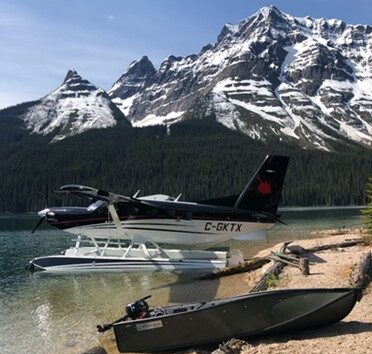
Transportation Safety Board releases findings from last year’s fatal float plane accident near Tahsis, B.C.
By Alexandra Mehl, Local Journalism Initiative

Tahsis, BC – Almost one year ago, in the early afternoon of June 20, a privately registered float-equipped aircraft was involved in a devastating and fatal crash on its way to a cabin 60 nautical miles northwest of Tofino/Long Beach Airport.
On May 8, 2024, Transportation Safety Board of Canada (TSB) released its investigative report to determine what occurred in the fatal incident.
In the early summer of last year, the pilot alongside three passengers boarded a privately registered Quest Kodiak 100 amphibious float-equipped aircraft at Masset Airport, located on Haida Gwaii, and headed to a cabin in Tahsis Narrows.
When the aircraft arrived in Tahsis Narrows, it followed a “straight-in” water landing near the cabin, the report reads.
Upon first contact, both floats touched the water at the same time, however the aircraft then bounced and reapproached the surface a second time.
During the second attempt, at a level attitude, the left float came into contact with an object or boat wake, reads the report, causing the aircraft to bounce 30 feet and bank to the right.
The pilot initiated a go-around – meaning to abort the landing due to an unstable approach or obstruction in the landing way – but as the aircraft gained altitude over land, it came into contact with trees and crashed.
According to the report, the crash resulted in the death of the pilot and one passenger, while another occupant was seriously injured and the other only minorly hurt.
The aircraft was destroyed after the crash in a fire.
The report determined that the pilot held appropriate licencing for the flight, with a total of roughly 1,200 accumulated flight hours. Of the 250 flight hours accumulated by the pilot on the occurrence aircraft, half of the landings occurred on water, though most of those on lakes.
This was not the first time the pilot had landed at this location either, the report reads. Five days earlier, the pilot successfully conducted a landing in Tahsis Narrows.
Based on imagery available the report concluded that at the time of the attempted landing and crash the wind was 4 to 6 knots with small waves in the water.
The report continued to say that at the time and location of the collision, weather conditions remain unknown. But due to the mountainous terrain in the area there is the possibility that wind shears or down drafts could have been present to create dangerous landing conditions.
The report refers to a quote from Weather Ways which reads, “in general, the strength of the downdrafts is such that an aircraft flying parallel to the range could be forced to the ground or, if flying upwind, might fail to clear the range.”
The TSB concluded the report with safety recommendations for pilots when landing on water, including to circle the area three times prior to landing to examine wind strength and direction, check the landing run for obstacles like submerged logs and boaters, among other safety recommendations.